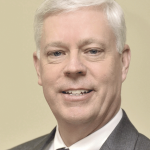A Host of Factors Are Lifting the Region’s Economy Higher
On the Bright Side
By Richard Sullivan

Richard Sullivan
The state of the region’s economy is strong, and the economic outlook is bright. That’s a simple statement, but let’s look at the facts that support that optimism.
We all have read of the important investments that MGM and CRRC, the Chinese rail-car manufacturer, are making in Springfield. Less-reported is the some $5.2 billion of economic-development projects that have recently occurred or are currently underway in our region.
In a 2016 study, the Economic Development Council of Western Mass. (EDC) catalogued the growth in each community — from housing developments to manufacturing companies expanding and relocating to the area; from transportation investments to growth in our public and private education systems. That study shows strong and important regional investments, and this trend is continuing.
MGM and CRRC are certainly important regional economic-development projects for the jobs they are creating, the taxes they will pay, and the many public benefits they are required to provide through their host-community agreements. However, the biggest economic impact the projects will have is when they contract with local businesses as part of their operational and supply chains. MGM specifically is using best efforts to annually contract locally for $50 million in goods and services. These dollars will stay local, provide additional economic opportunities, and create more jobs in companies that are part of the fabric of our communities, hiring our neighbors, paying local taxes, and supporting our local charities. It is an opportunity we are capitalizing on, but one that we can’t lose sight of.
Another bright spot within the local economy is tourism. You may think Boston, San Francisco, or New York, but maybe not Western Mass., when it comes to this important sector. However, tourism is the third-largest industry in the region. Approximately 3 million visitors come to the area each year, spending $750 million, producing an estimated $17 million in state and local taxes, and supporting 5000 jobs.
Mary Kay Wydra, president of the Greater Springfield Convention & Visitors Bureau, is bullish on the growth of tourism in Western Mass., with the addition of MGM, the Dr. Seuss Museum, a soon-to-be-refurbished Basketball Hall of Fame, continued investment at Yankee Candle and Six Flags, and more. She is confident that annual visitorship will grow. Tourism is a vital part of our economy and will become even more important beginning in 2018.
Still another source of optimism and good news is the growing amount of entrepreneurial energy in the region.
Indeed, at the recent “State of Entrepreneurship in the Valley,” hosted by Steve Davis and the EDC entrepreneurship committee, the focus was on the growth of a relatively new sector for the region — innovation, startups, and entrepreneurship. In 2015 and 2016 alone, more than 9,000 people attended a Valley Venture Mentors (VVM) event; there are currently 613 part-time and 227 full-time jobs in the startup ecosystem, and just under $27 million of revenue and investment was created in the region. If all the startups were under one roof, they would represent the 11th-largest company in Springfield.
The entrepreneurship ecosystem is growing up and down the Valley. VVM works closely with initiatives in Franklin County and SPARK in Holyoke; our local colleges and universities have all carved out leadership positions; Greentown Labs, based in Somerville, Mass., has opened a manufacturing office at the Scibelli Enterprise Center; and the Grinspoon Entrepreneurship Initiative is a national leader in elevating the importance of entrepreneurship and recognizing entrepreneurial excellence among college students. A new group, Women Innovators & Trailblazers (WIT), is establishing itself in order to ignite a women-led innovation economy in Western Mass. and beyond. This is an exciting and quickly growing sector in the region.
I see additional new sectors growing in the region that can become centers of excellence for Western Mass. This year, UMass Amherst, in cooperation with the EDC, hosted an event highlighting its national leadership position in the field of green technology and the environment. The event was sponsored by the Massachusetts Clean Energy Center and focused on building technologies, water innovation, and clean energy and storage. Companies from across Massachusetts came to discuss the quickly growing green-technology cluster and the partnerships that can be developed between the private sector and the university for research and development, but also talent development.
Bay Path University recently staged its fifth annual Cybersecurity Summit, showcasing the work it is doing in the field of cybersecurity. President Carol Leary, who serves as a member of the Department of Homeland Security’s Academic Advisory Council, said “it is critical for higher education to be a central part of this emerging cyber ecosystem. We are developing the right talent, the diverse talent needed to be a part of the cybersecurity workforce. To the students pursuing a cybersecurity career — you are the future, you are qualified, and we need you more than ever.”
Western Mass., because it is home to a significant number of universities, colleges, community colleges, and technical schools, finds itself in an enviable position because it can supply the workforce of the future. Still, there is no doubt that the biggest issue facing our existing companies, and the companies of the future, is their ability to find, develop, and retain a high-quality workforce.
We need to coordinate with all the great workforce-development organizations in the region and leverage the high-quality education institutions that call Western Mass. home to meet this demand.
When we do, our future economy will be bright.
Richard Sullivan is president of the Economic Development Council of Western Mass.; [email protected].




